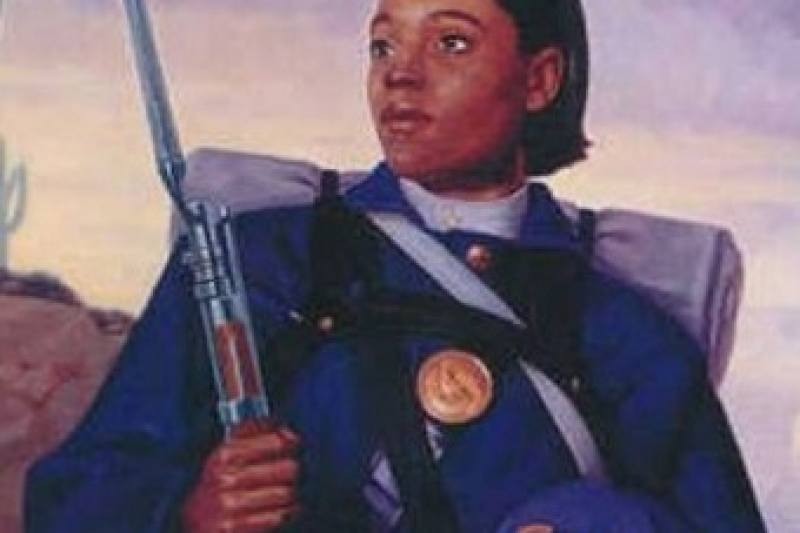Private Cathay Williams hid her gender as the nation’s only female Buffalo Soldier from 1866-68. A bronze bust memorial was dedicated to her in 2016 at the Richard Allen Cultural Center in Leavenworth, Kan.
BY KEISHA BELL | Visionary Brief
The law said only men could enlist. She had a different idea. Have you ever had to defy a gender-restricted rule to achieve a goal? Sometimes, these rules are not explicit. From legislative halls to construction sites, think of decision-makers within an industry. What gender first comes to mind? Why?
Meet Cathay Williams, a history maker who was born in Sept. of 1844 in Independence, Mo. Although her father was a free man, Williams was born a slave under the law at the time because her mother was a slave. Williams’ date of death is estimated to be 1893. Sadly, her burial site is unknown.
In 1861, the Union Army occupied Jefferson City, Mo. During this time, Williams worked on a plantation on the edge of Jefferson City. Could the proximity between her location and that of the Union Army have inspired a dream and instilled within her the courage to pursue an opportunity to be considered more than “contraband,” which is what captured slaves were deemed by Union soldiers?
Although it was against the law, at the age of 22, Williams enlisted in the United States Regular Army. By doing so, she became the first African-American woman, as well as the only documented woman to serve in the United States Army posing as a man. Williams used the name of “William Cathay” to enlist.
Shortly after enlisting, Williams contracted smallpox. She was frequently hospitalized during her service until a physician discovered that she was female. Williams did not complete her three-year commitment but instead was discharged on Oct. 14, 1868.
Williams’ life and military service narrative was published in the St. Louis Daily Times on Jan. 2, 1876. In June of 1891, Williams applied for a disability pension based on her military service. She suffered from neuralgia and diabetes. Also, Williams had all of her toes amputated and could only walk with a crutch.
In Sept. of 1893, a doctor via the U.S. Pension Bureau examined Williams and concluded that she did not qualify for disability payments. Note, Williams would not have been the first female soldier to receive a pension. Deborah Sampson, Anna Maria Lane, and Mary Hayes McCauley all received their pensions for their service in the American Revolutionary War. Still, Williams’ application was denied. Shortly afterward, she died.
Williams saw a place to fight in a war in a way that challenged societal limitations placed upon her. Today, many face a similar struggle. She fought for the U.S. To recognize her societal contributions, a bronze sculpture of Williams with accompanying information circled by a small rose garden is outside the Richard Allen Cultural Center in Leavenworth, Kan.

Keisha Bell
Also, the Private Cathay Williams monument bench is on the Walk of Honor at the National Infantry Museum in Columbus, Ga. May her vision and service never be forgotten.
Keisha Bell is an attorney, author, and public servant.








